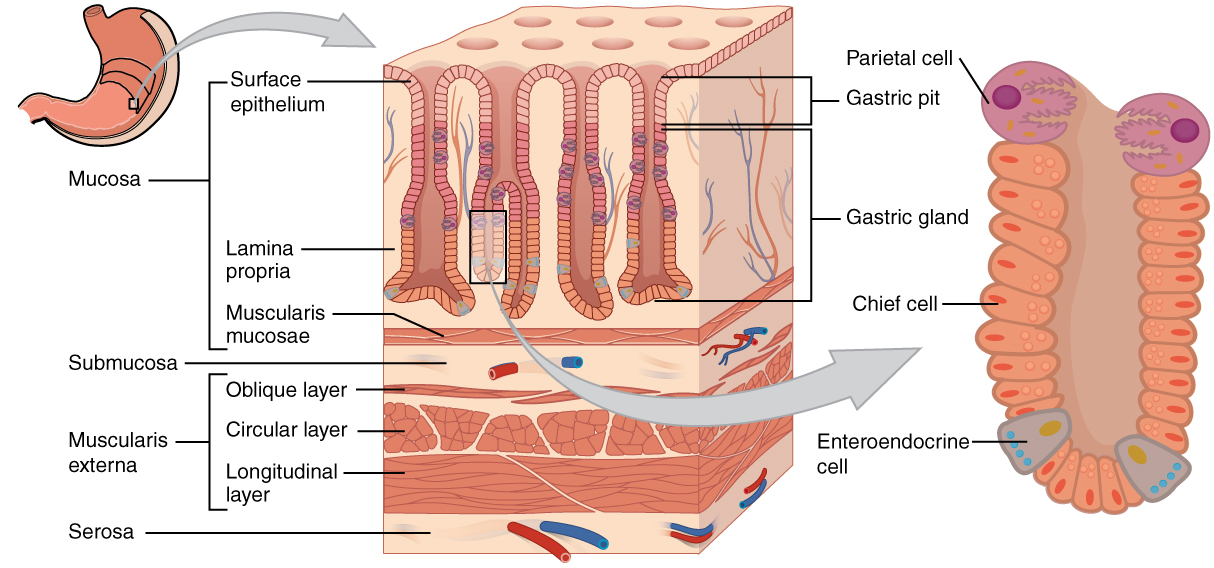The stomach is a very complex organ. It is rounded and hollow, and located near the diaphragm in the left part of your abdomen. It is part of the digestive tract, located between the esophagus and the duodenum. The stomach acids and enzymes work to break down food which is then released into the small intestine. But do you know the layers of stomach and how they function during digestion?
Layers of the Stomach
Stomach has gastric pits, which has gastric glands that secrete acids. The mucosa forms folds called rugae that look like wrinkles and flatten as your stomach gets full. Here's more about the layers of the stomach.

1. Mucosa
This is the innermost layer of the stomach. The main job of the mucosa is to secrete mucus that protects the stomach from its own acids.
In this layer, small pores known as gastric pits are responsible for creating the acids that the mucosa protects the stomach from. And the muscularis tissue in it helps the mucosa form folds to further protect the stomach.
2. Submucosa
This surrounds the mucosa and is made up of blood vessels, nerves and connective tissues. It has connecting tissues, nervous tissue, blood vessels and nerves. The connective tissues support the mucosa and connect it to the musclaris. It controls secretions and smooth muscle contractions that move food through the stomach.
3. Muscularis Externa
Of all the layers of the stomach, this one has the most mass and surrounds the submucosa. There are three layers of muscular tissue with fibers that run in three different directions. This layer is protective of the submucosa and mucosa, as well as helps to move food through the stomach.
4. Serosa
This outermost layer of the stomach is a thin membrane that protects the stomach from other organs and the motion of the food inside. It is a thin membrane made up of areolar connective tissue and squamous epithelial tissue.
This video offers much more information on the layers of the stomach:
Stomach Cells Producing Secretions
The stomach digests food through secretions, including digestive enzymes, hydrochloric acid and mucus. These secretions are created in the mucosa. Here are the cells you can expect to find in the layers of the stomach.
|
Type of Cell |
Function |
|
Mucous Cells |
These exocrine cells secrete mucus in a thick layer, which coats the gastric pits. The bicarbonate ions in the mucus also neutralize stomach acid, so it doesn't eat through the stomach itself. |
|
Parietal Cells |
These cells produce intrinsic factor, a glycoprotein that binds to B12 and absorbs the vitamin. They also produce hydrochloric acid which aids in breaking down foods. |
|
Chief Cells |
These cells are responsible for producing gastric lipase and pepsinogen. Pepsinogen leaves the chief cells and turns into pepsin when it comes into contact with hydrochloric acid. Gastric lipase digests fats in the stomach. |
|
G Cells |
These endocrine cells are at the bottom of the gastric pits; they release gastrin, a hormone that controls stimulation of the glands and muscles of the stomach. It increases production of gastric juices, as well as encourages the contractions of the stomach that move food through it. |
